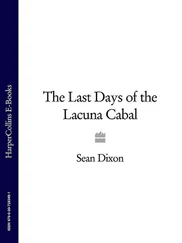Though the autumn of 1781 was one of the warmest in living memory, winter finally set in with a vengeance at the end of November. In the following week, it was so cold that Catherine had to close the imperial theatres and cancel her gatherings at the Hermitage. On 20 December, two coachmen were found dead in more than thirty degrees of frost. Nor was this the final trick that the weather had up its sleeve. Within a week of an unseasonal thaw in mid-January, the Court apothecary had dispensed medicine to more than 500 victims of a flu epidemic. Catherine herself succumbed at the end of the month, bringing the Court to a standstill for several days. Though she felt well enough on 3 February to attend her annual lunch with Stroganov, who had returned from Siberia in December with two ancient silver vases, dug up from his own salt mines, she did not linger long. 87Yet any thoughts of a permanent slowdown in middle age were soon dispelled. At Peterhof to celebrate the twentieth anniversary of her accession to the throne in June, she had lost none of her energy, as she emphasised to Grimm:
Would you like to know what I did the day I arrived here? I ran like a hare and at 11 o’clock, I duly went to mass, as if it were a Sunday. Then I gave an audience to M. de la Torre, whom I count among my old acquaintances, and to M. de la Hererra and Count Lacy, and then to the minister of Saxony. After that, I walked the length of the garden to the quayside in search of my lunch with M. Betskoy. After lunch, I took a launch to the admiralty; there I took some tar and gave three strokes of the hammer to each of two new 100-gun vessels that I had ordered to be built; then I got onto a ship with 74 guns which I ordered to be launched into the water once I was aboard. It took us towards the bridge over the Neva. There, having dropped anchor, we disembarked and got back into the launch to return to the admiralty, where we walked across to find a carriage to take us to the Master of the Horse’s country estate [Leventhal on the Peterhof road]. Having walked through his woods and his promenades, we dined and then arrived here at half-past midnight. So what do you say of a day like that? Wasn’t it packed? I assure you that everyone apart from me was exhausted. 88
As if to symbolise her indomitable drive, Catherine finally unveiled Falconet’s statue of Peter the Great on 7 August 1782, a hundred years after his accession to the throne. Only the clergy were absent, perhaps still smarting that the Church had been unable to register its objections to the superhuman figure, twice as big as the tsar himself. 89‘From Catherine II to Peter I’ was the lapidary motto, inscribed in Latin on the west-facing side of the pedestal and in Russian on the side facing east. Harris grasped the unspoken comparison immediately: ‘I could not avoid, during this ceremony, reflecting how impossible it was that any successor of Her Imperial Majesty who might, in some future day, erect a statue in commemoration of her great actions, ever should be so much superior to her, as she herself is superior to Peter the Great, both in the art of governing, and in that of making her people respected and happy.’ 90
* * *
If Tsar Peter remained the single most powerful symbol of Russia’s superhuman potential, then the great flood of 1777 had offered a salutary reminder of the fragility of man’s triumph over nature. Woken by a gale at five o’clock on the morning of 10 September, Catherine gazed out from the Hermitage onto a scene resembling ‘the destruction of Jerusalem’. 91Rising almost eleven feet above its normal level, the swollen Neva had dumped a fleet of merchant vessels onto the embankment, leaving a forest of tangled masts prey to scavengers for timber. It subsequently emerged that the storm had felled hundreds of trees at both the Summer Palace and Peterhof; the Winter Palace cellars were flooded and its roof damaged; and dozens of the capital’s grandest buildings were severely disfigured. 92Though her first thought had been to summon her sentries to safety, more than a hundred of Catherine’s subjects lost their lives that night. ‘Where am I going to put the 100 gaolbirds taken prisoner by the water?’ she mused to Potëmkin. ‘In the House of Quarantine, I say, but I don’t know whether it is strong enough. The canals are alive, and fifteen faithful soldiers have sunk into them.’ 93
Even as it overflowed, the river was gradually being enclosed by granite embankments designed by Georg Veldten. Begun in 1763, this extraordinary project had reached the Summer Garden by 1770 but was still incomplete in 1777. Four years later, as her carriage snaked between the boulders littering the English Embankment, Elizabeth Dimsdale expressed a common prejudice by doubting that it would ever be finished: ‘the Russians are with great truth remarked to begin things with great spirit and for a little time go on very rapidly, then leave for some other object’. 94She did Catherine an injustice. In January 1780, the empress had charged General Bauer with dredging and redecorating the Fontanka with a budget of 2,372,650 roubles, payable in ten annual instalments. By 1787, much of the canal had been clad in stone under her watchful eye, despite a disconcerting demonstration by 400 peasant labourers, protesting against the miseries imposed on them by the merchant contractor. 95Ultimately, only the Admiralty wharf interrupted an elegant promenade stretching ten feet above the normal water line for several miles along the left bank of the Neva. Widely admired as ‘one of the most sumptuous ornaments of the city’, the embankment was praised by foreign visitors as a ‘grand work, which, in regard to utility and magnificence’ could not ‘be paralleled except among the ruins of ancient Rome’. 96
Classical models were no less prominent in Catherine’s mind in planning the redesign of Tsarskoye Selo, where she had advertised her intention ‘to summarise the age of the Caesars, the Augustuses, the Ciceros and such patrons as Maecenas and to create a building where it would be possible to find all these people in one’. 97In 1773, she had hoped that Charles-Louis Clérisseau would draw on his long residence in Rome to design a classical maison du jardin , but he disappointed her by proposing a gargantuan structure on the scale of Bazhenov’s abortive plans for the Moscow Kremlin. 98The architect ultimately entrusted with her dreams was Charles Cameron, a barely tested Londoner of Scottish descent who came to Russia to make his fortune in 1779. Over the next few years, Cameron and a small army of Russian and Scottish labourers created an elegant neoclassical gallery above the Roman baths on which he had written a treatise. ‘To drive you wild, monsieur le chevalier,’ Catherine boasted to Grimm in 1786, ‘I have to tell you that you will no longer be able to find me here after dinner, because apart from seven rooms garnished in jasper, agate, and real and artificial marble, and a garden right at the door of my apartments, I have an immense colonnade which also leads to this garden and which ends in a flight of stairs leading straight to the lake. So, search for me after that, if you can!’ 99
As this letter shows, Rastrelli’s Baroque interiors were also transformed in these years. Once the main staircase had been moved in 1778 from the southern end of the palace to the centre where it now stands, Catherine had the southern wing converted into a series of cool, neoclassical rooms, no longer extant. Cameron produced at least three variations for the décor of the Lyon room, ultimately said to have cost 201,250 roubles, or £40,250, not including the lapis lazuli. Measuring thirty-six by thirty-two feet, the room was twenty-eight feet high and took its name from the French silks hanging between twelve mirrors, thirteen feet long by four feet wide. It was almost complete by the time the Court returned to St Petersburg at the end of September 1781. Three further apartments were already finished: the Chinese room, decorated ‘with prodigious fine China jarrs’; the Arabesque room, where Catherine was to enjoy countless games of cards and chess; and her tiny study, which appeared to Elizabeth Dimsdale ‘like an enchanted place, the sides of it inlaid with foil red and green so that it dazzled ones eyes to look at it’. 100Equally delighted by Cameron’s ‘superlative’ interiors, the ever-competitive empress announced to Grimm that ‘no one has seen anything to match them: I can tell you that I have done nothing but look at them for the last nine weeks’. 101Paul’s departure for Vienna allowed Cameron to start on his northern part of the palace, between the staircase and the chapel. ‘Every Sunday I pass your apartments,’ Catherine reported to Maria Fëdorovna shortly after her fifty-third birthday in 1782, ‘which currently have neither windows nor doors and are full of workmen.’ 102
Читать дальше












